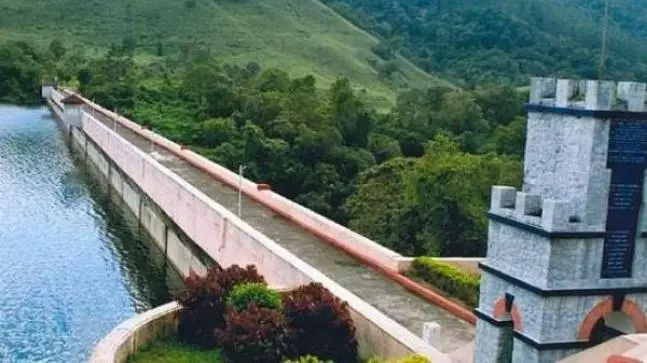
Southern India faces water crisis as reservoir levels plunge: CWC
CWC reported that 42 reservoirs under monitoring in the southern region have a total live storage capacity of 53.334 BCM (billion cubic meters).

New Delhi, Apr 26 (PTI) The southern region, encompassing states of Andhra Pradesh, Telangana, Karnataka, Kerala and Tamil Nadu, has significantly reduced water storage compared to historical averages at just 17 per cent of reservoir capacity, according to the recent bulletin of the Central Water Commission.
In the bulletin released by the CWC late Thursday concerning reservoir storage levels across various regions of India, it was reported that 42 reservoirs under CWC monitoring in the southern region have a total live storage capacity of 53.334 BCM (billion cubic meters).
As per the latest report, the total live storage available in these reservoirs stands at 8.865 BCM, representing only 17 per cent of their total capacity.
This figure is considerably lower compared to the storage levels during the same period last year (29 per cent) and the ten-year average for the corresponding period (23 per cent).
The reduced storage levels in the southern region are indicative of worsening water scarcity and potential challenges for irrigation, drinking water supply and hydroelectric power generation in these states.
In contrast, the eastern region, comprising states like Assam, Odisha and West Bengal, has shown a positive improvement in water storage levels compared to last year and the ten-year average.
The bulletin highlighted that in this region, 23 monitored reservoirs with a total live storage capacity of 20.430 BCM currently hold 7.889 BCM of water, representing 39 per cent of their total capacity.
This marks an improvement over the storage levels from the same period last year (34 per cent) and the ten-year average (34 per cent).
The situation is less optimistic in other regions.
The western region, consisting of Gujarat and Maharashtra, reports storage levels of 11.771 BCM, which is 31.7 per cent of the total capacity of 49 monitored reservoirs.
This is notably lower compared to the storage levels of the previous year (38 per cent) and the ten-year average (32.1 per cent).
Similarly, the northern and central regions also show declines in water storage levels compared to historical averages.
The broader analysis provided in the bulletin categorizes reservoir storage across various river basins as "better than normal," "close to normal," "deficient," or "highly deficient".
Notably, river basins like Brahmaputra, Narmada and Tapi are marked as having better-than-normal storage levels, whereas basins like Cauvery and east flowing rivers between Mahanadi and Pennar are classified as highly deficient. PTI

